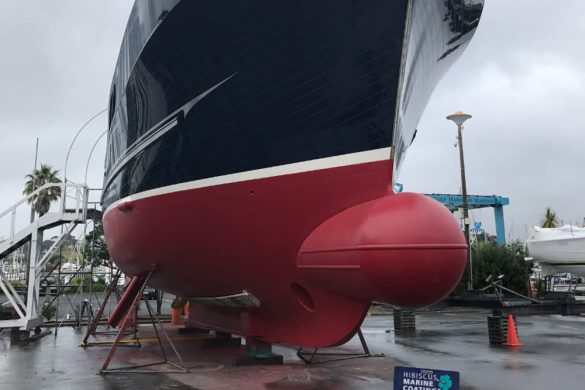CHOOSING THE RIGHT ANTIFOULING
There are antifoulings and there are antifoulings and what’s going to be best for your boat may have a lot to do with the environment as what works well in one area may not be so good in another.
The best antifouling not only protects your boat’s performance, it looks good, too.
Antifouling your boat is a tough, dirty, time-consuming job, but choosing the best antifouling for your needs can be even tougher. Antifoulings are all intended to eliminate growth on your boat’s bottom and to get the job done they have biocides in them. But there are many different types of biocides and different ones in different formulations may work better or worse in different environments. On top of that, just how you use your boat also has an impact on choosing the best antifouling.
Geography Counts
First and foremost, remember that the nature of bottom growth varies from one body of water to the next. Boatyards in different regions tend to favour one type of antifouling over another, with particular formulations and brands chosen through years of experience. Whenever you’re antifouling a boat step number one is asking around at the marinas and marine supply stores to find out what the regional favourites are in your area. After checking in with a few sources a short-list of local picks will likely emerge.
Antifouling Types
There are two basic types of antifouling: hard types, and softer ablative/polishing types that slowly slough off and expose new biocides with use. There are also many hybrid antifoulings that are semi-ablative, splitting the difference between hard and soft. Which will be best for you?
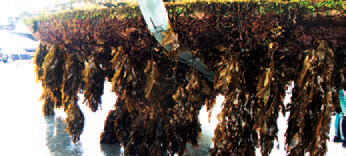
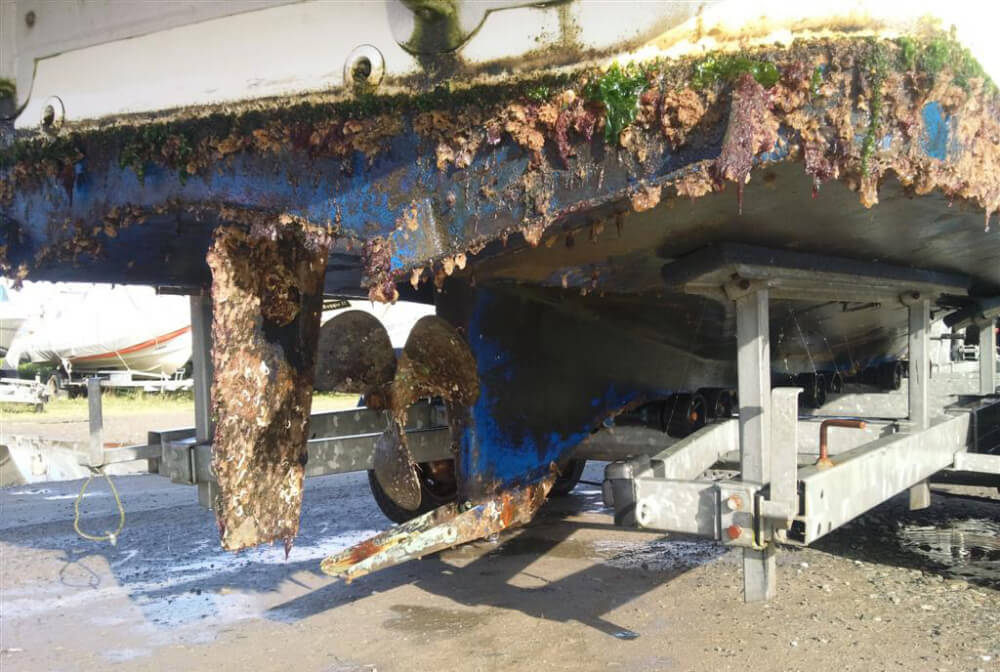
If you use a semi ablative antifouling you can get away with only having to slip the boat once every 18 months or so and give the bottom a light wet and dry sand with 80 grit it actually removes the spent antifouling on the surface and exposes the fresh antifouling allowing the cuprous oxide etc to once again react with the salt water to produce the toxic soup to slow marine growth. It is almost like repainting the bottom again.
That all depends on how fast your boat cruises, how often you take it off the marina and if you trailer it.
Hard types, or semi ablative types are best for boats that have high-speed use ( 30-plus knots or so) and on those that are trailered (or run on and off of boat lifts) with some regularity. However, they’re difficult to remove and stripping or soda-basting is necessary after a few seasons of use. Ablative/polishing types are essentially self-cleaning and once they wear away, they don’t leave much build up behind. You can get away with repainting for years without stripping it every spring. But they’re easily scraped off the hull if you trailer the boat, or put it on bunks every time you use it. Ablative/polishing types can also lose their effectiveness if your boat sits at the dock for long periods of time since fresh biocides aren’t being regularly exposed.
The bottom line? If you regularly trailer the boat, keep it on a lift, or run at very fast speeds on a regular basis, you need a hard or semi ablative antifouling. If you have a slower boat that’s kept on a marina, an ablative/polishing or semi ablative paint will be the pick. And if you fall somewhere in-between, a hybrid might make sense.
Biocides in Antifouling For Boats
Years ago, TBT tin was the favoured biocide. But it was terrible from an environmental perspective and thanks to reasonable environmental restrictions, hasn’t been in use for decades. Today, cuprous oxide is the most common biocide. It’s generally thought to be effective, but it’s still tough on the environment.
Other more environmentally-friendly biocides like zinc omadine, (aka zinc pyrithione), copper thiocyanate, can be used, but they generally don’t match the protection level of cuprous oxide. A new offering is the organic compound medetomidine, which stimulates larval barnacles to keep them in swimming form rather than attach to a hull. But this remains an unproven tech and is as yet not available in New Zealand or Australia.
When it comes to antifouling aluminium hulls or drive units, cuprous oxide isn’t an option for most vessels because putting copper on aluminium will set off galvanic corrosion and destroy the metal. But on some larger aluminium hulled vessels application of certain primer types together with a Capac unit, that’s an on board electronic monitoring system keeping the hull at a voltage potential that stops any galvanic reaction, allows the use of certain types of cuprous oxide based antifoulings.
Plenty of hapless boaters have put their foot right through the bottom of an aluminium boat or discovered a destroyed drive unit a few years after inadvertently slapping on a coat of cuprous oxide based antifouling.
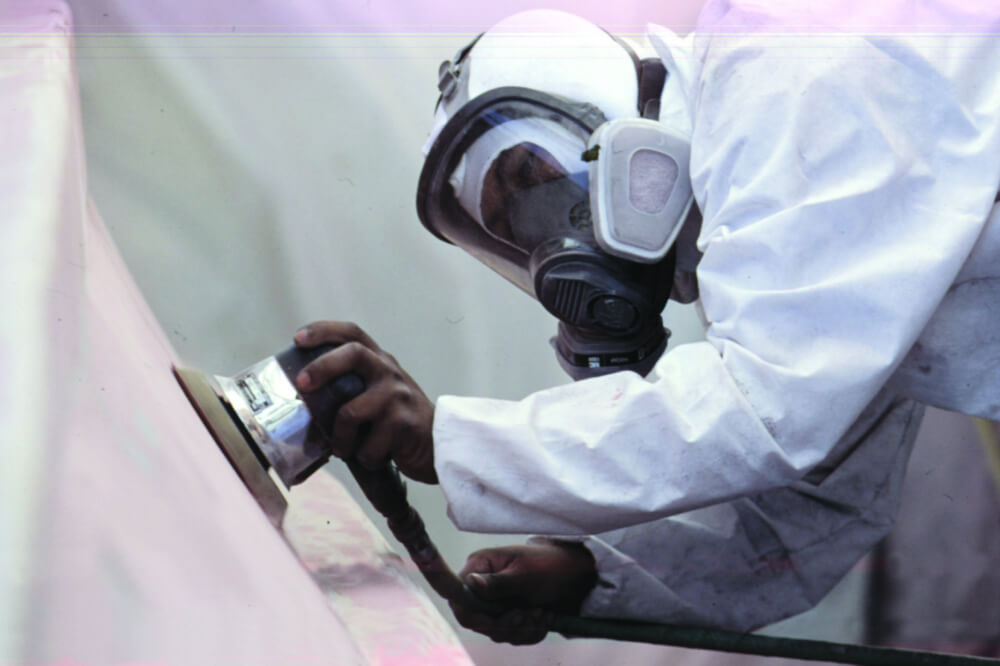
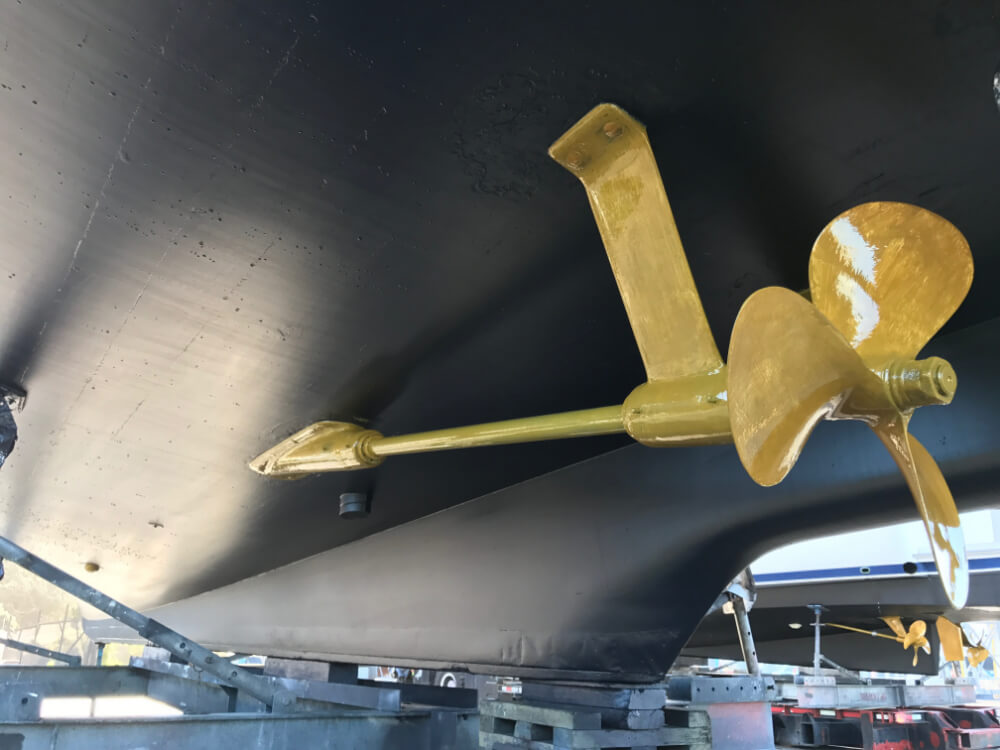
Plenty of hapless boaters have put their foot right through the bottom of an aluminium boat or discovered a destroyed drive unit a few years after inadvertently slapping on a coat of cuprous oxide based antifouling.
When it comes to fiberglass, after all is said and done, cuprous oxide remains the number-one biocide for long-term in-water storage. For those who do their boating in waterways with only moderate growth issues, or boaters who put in their boat for a few weeks at a time and then haul out with regularity, other more environmentally-friendly options are worth considering.
Along with cuprous oxide, many antifoulings contain added organic biocides to boost the performance of the cuprous oxide and act as an anti-slime protection to retard the growth of algae.
Due to different legislation around the world the types used will vary from country to country. In NZ and Australia the booster biocide used will be declared on the label.
Today most so called hard, semi ablative or the softer ablative/polishing type antifoulings are compatible with each other and can be applied over each other. Check the overcoating compatibility charts of the brand of antifouling you’ve chosen to make sure your choice is okay.
There are some very specific hard vinyl products that are not suitable for applying over the ablative/polishing types but these are uncommon in the local Australia and NZ market.
If you need to antifoul your boat, also be sure to choose an antifouling that fits your schedule and will allow you to launch it within the recommended timeframe. Antifoulings have specific time-windows between application and launch and if you miss that window, extra work to reactivate the surface will be required to ensure the antifouling hasn’t sealed off and will release biocides once launched.
Finally, remember that painting a boat bottom is a dirty, labour-intensive, difficult job — especially if it has to be stripped first. Unless you really enjoy DIY work, don’t mind getting grimy, and have plenty of time on your hands, this is probably a job you want to leave to the marina.


